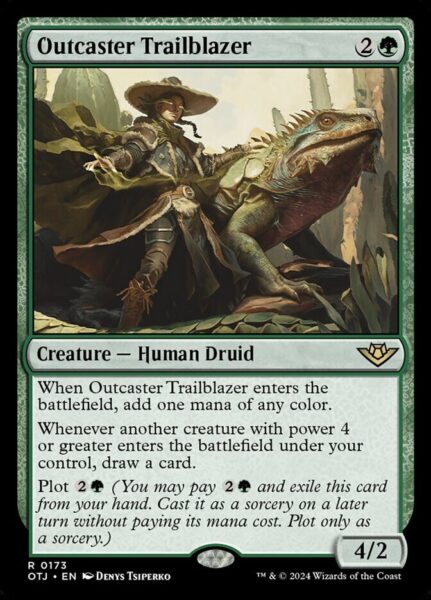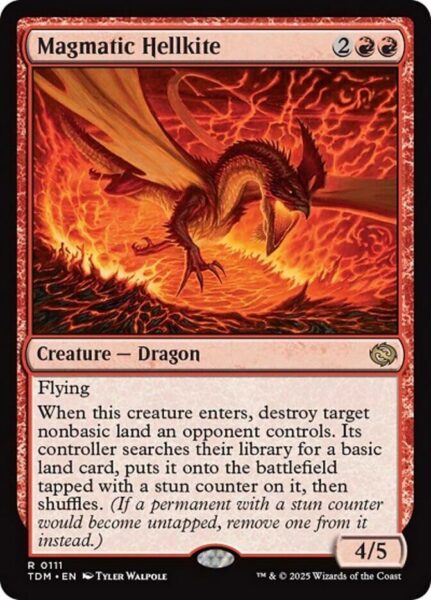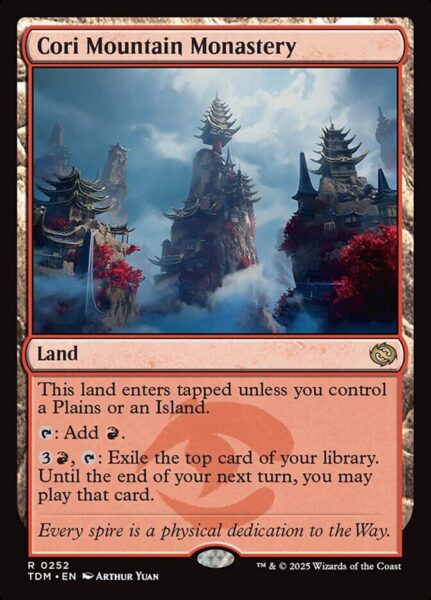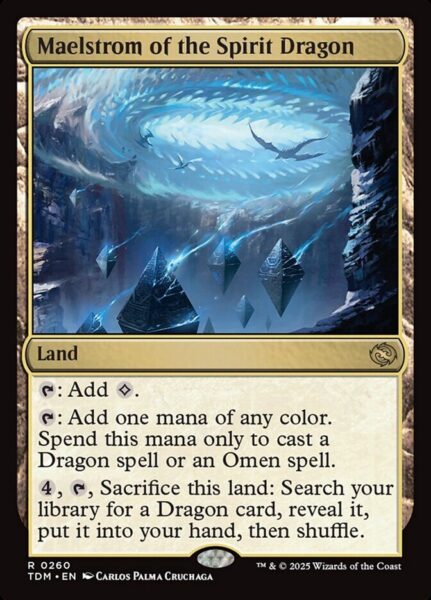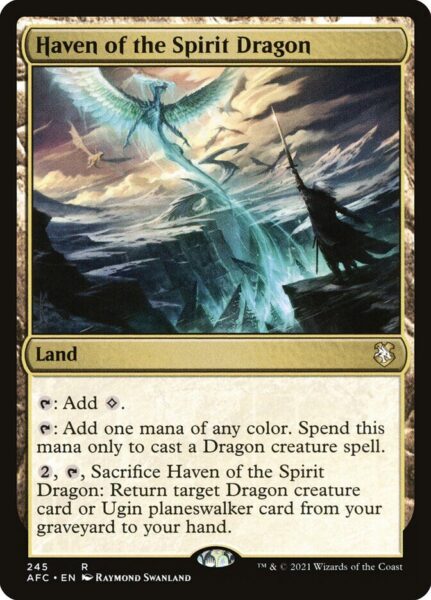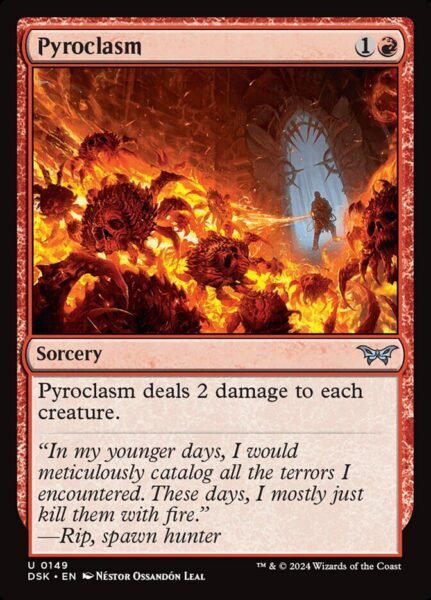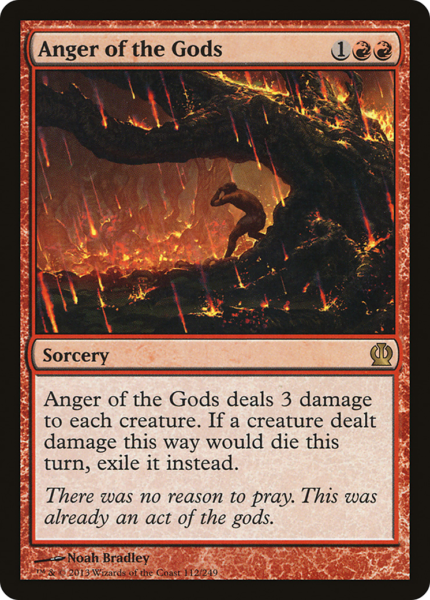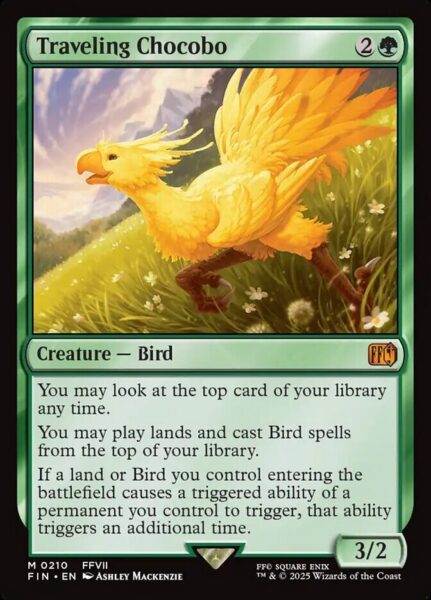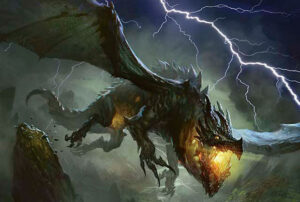by Johnny Cycles, May 30th, 2025
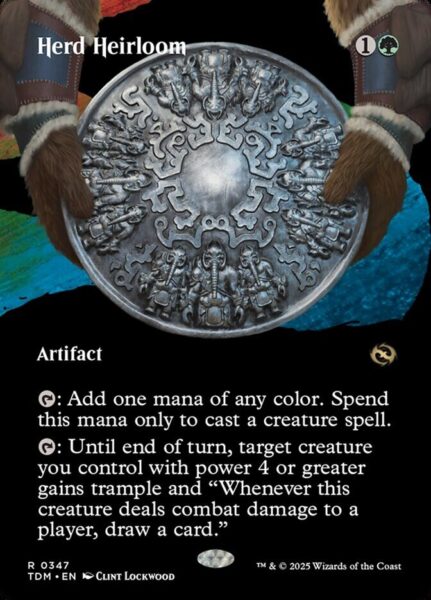
Hello! Welcome to another edition of Dragons in Pioneer. This month I’m excited to try a bunch of new Tarkir: Dragonstorm cards in Pioneer! The centerpiece of the deck is Herd Heirloom, a card I knew I wanted to build around the moment I saw it. Running out of gas is one of the top two issues Dragons have in both Modern and Pioneer. Is an artifact that both ramps us and gives us some potential card draw the missing piece? Let’s find out!
Decklist – Power Matters
by Johnny Cycles
Format: Pioneer
Creatures (30)
| 4 Elvish Mystic | |
| 4 Llanowar Elves | |
| 4 Sarkhan, Dragon Ascendant | |
| 3 Outcaster Trailblazer | |
| 3 Surrak, Elusive Hunter | |
| 4 Magmatic Hellkite | |
| 4 Dragonhawk, Fate’s Tempest | |
| 4 Glorybringer |
Artifacts (4)
| 4 Herd Heirloom |
Spells (4)
| 4 Torch the Tower |
Lands (22)
| 2 Cavern of Souls | |
| 2 Commercial District | |
| 2 Copperline Gorge | |
| 4 Forest | |
| 4 Mountain | |
| 4 Stomping Ground | |
| 4 Thornspire Verge |
Sideboard (15)
| 2 Chandra’s Defeat | |
| 3 Pick Your Poison | |
| 3 Rending Volley | |
| 2 Agatha’s Soul Cauldron | |
| 2 Magebane Lizard | |
| 3 Unlicensed Hearse |
Deck Tech
Primary Game Plan
We’re looking to ramp into our 3-drops and 5-drops on turns 2 and 3 respectively and start beating down our opponent until they’re dead, much like my Gruul Dragons deck I’ve played before. The big difference between the two decks can be found in the middle. In place of 3-mana Planeswalkers, we’re playing some powerful creatures with 4 power to synergize with Herd Heirloom.
Outcaster Trailblazer does a decent impression of Kiora, Behemoth Beckoner, while giving us a target for Herd Heirloom. Surrak, Elusive Hunter, another new Tarkir: Dragonstorm card, almost always replaces itself. He’s no Domri, Anarch of Bolas, but we’re hoping his lack of ramping and fighting will be made up for by sheer card draw. Finally, Magmatic Hellkite answers pesky utility lands, has evasion, and doesn’t die to commonly played damage-based removal.
But these beauties aren’t just good targets for Herd Heirloom.
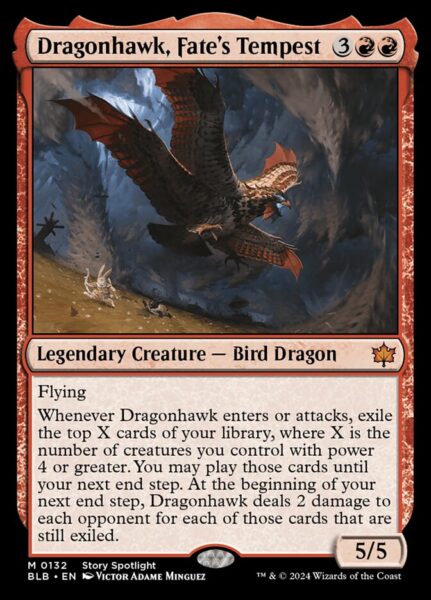
They also happen to synergize with one of my favorite new Dragons, Dragonhawk, Fate’s Tempest. With all that power in the 3- and 4-drop slot, we’ll often get three or more triggers out of this Bird Dragon. That’s more card advantage should we be attacking and a lot of damage straight to our opponent’s dome when it enters.
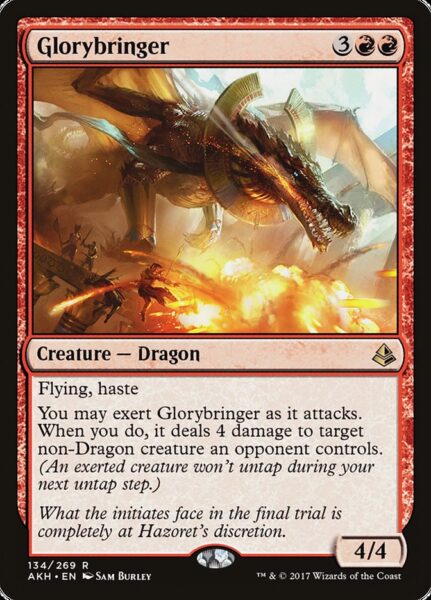
Rounding out our Dragons is the GOAT of Red Dragons – Glorybringer. I’m mostly including the picture so that he doesn’t feel left out.
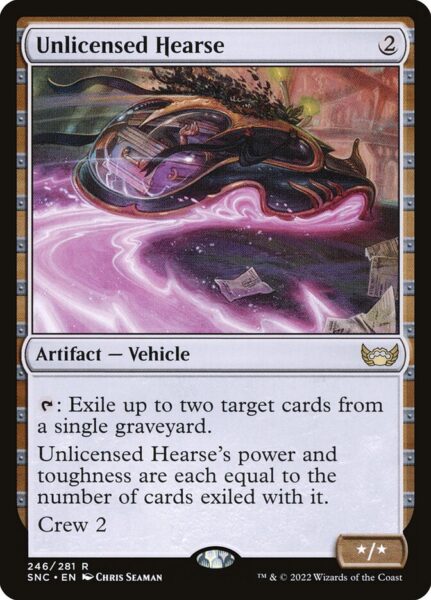
Sideboard
We’re skewing a little towards graveyard hate, with spot removal making up the remainder of our 15 (this includes Pick Your Poison). Magebane Lizard is the odd one out of that group and largely included to hate on various combo decks. I have some reservations about this list, but Pioneer as a format is still somewhat of a mystery to me, so I’m making educated guesses rather than picks based on experience. In the month or more that passes between my Pioneer articles, the meta can shift considerably.
Match 1 vs. Mono Red Mouse Aggro
Match 2 vs. Lotus Field Combo
Match 3 vs. Mono Green Landfall
Match 4 vs. Sultai Control
Match 5 vs. Mono White Angels
Match 6 vs. U/W Control
Overall Record: 4-2
Impressions from Game Play
The deck felt powerful and it was a blast to play. Things went smoothly, for the most part, and our plan of drawing a lot of cards came together and kept us with enough action to win a bunch of games. We ran into a fun and explosive Landfall deck that beat us twice (I’m only including one of our matches). The deck is really cool and I’m excited to borrow some ideas from it for a future Pioneer article. The games were close, though.
We also lost to U/W Control. Game 1 was particularly brutal, as we had our opponent down to 1 life three times and they still were able to get the win. Game 2 wasn’t particularly close.
But, unfortunately, there’s a bit more to this story. I ran the deck through a league and it got fairly well smoked. We played Mono Red twice, Izzet Ensoul Artifact once, and two Midrange decks, one G/W and the other Boros Yorion. We’ve proven we can beat the aggressive decks with a little luck and the right draw. So while those losses hurt, I know from experience that we have the tools to compete.
I was pretty disappointed in our performance against the Midrange decks. In theory, we should be able to win as much of those match-ups as we lose, but the games didn’t feel particularly close. Obviously variance plays a big part in this, particularly as our deck didn’t run as smoothly as in our practice matches.
And I’m not counting our opponent’s interaction in this, but rather how often we mulligan, how often we flood, and how often we’re in a spot of winning with the right draw only to not get that card.

What about Herd Heirloom?
This deck was conceived and built around Herd Heirloom. So how did the new artifact perform? Overall, I was very happy with it. I felt good casting it on turn 2 as ramp and later in the game as potential card draw. Interestingly enough, we rarely drew it late when we had a creature we could target with it already on the battlefield. I see this as being one of its best times to shine.
A few things of note, however, should you want to play this card. First, you can’t use mana from it to plot Outcaster Trailblazer. Yes, that should be obvious to anyone who’s read the card, but it’s easy to think of this artifact as simply another mana rock, when it’s not. Second, you can’t target your mana dorks with its second ability, unless you’ve manage to pump their power to 4 or greater. Yes, this, too, is on the card, but there will be times when you really wish you could target an Elvish Mystic, so much so that you forget that you can’t…
I talk about how to shore up this deck’s weaknesses below, but I would not cut Herd Heirloom in this current build to make room for something else. If I had to cut something, it’d be Sarkhan, Dragon Ascendant, as sad as that makes me.
Weaknesses
This leads me to what I think is the greatest weakness of the deck: card draw.
I know, I know. I built this deck specifically to draw us a lot of cards. And we did! We definitely did, particularly in the games we won. However, in many of the games we fell behind in, it was directly connected to drawing too many lands and not enough action.
For the record, between Herd Heirloom, Outcaster Trailblazer, Surrak, Elusive Hunter, and Dragonhawk, Fate’s Tempest, we have 14 cards that can give us card advantage.
The thing they all have in common? It’s all conditional card advantage. Other than Dragonhawk, each of the other three need another permanent in play (or our opponent to do something) to net us a card. I knew this going into our games, of course, but reps matter and seeing it in action makes me wonder if there’s not another way, short of jamming in four copies of Fable of the Mirror-Breaker, to fix this.
Our mana base is fairly generic, all things considered. We play a total of zero creature lands and zero utility lands, such as Boseiju, Who Endures. The three lands pictured above are all powerful options that would help us fight against mana flood.
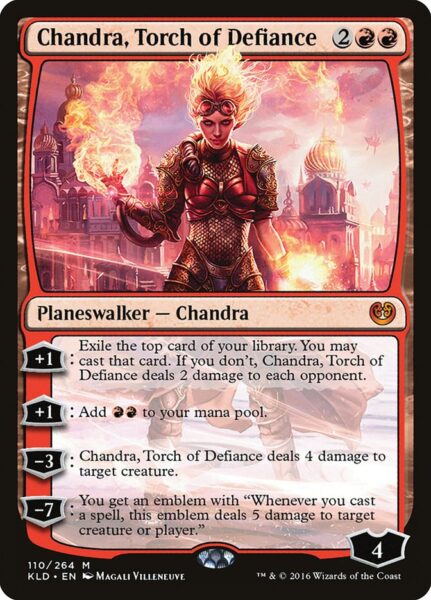
I used to play Chandra, Torch of Defiance in my Modern Gruul Dragons deck, but that format is too fast and efficient for the 4-mana Walker to be effective. Is Pioneer the right place for her now? In our current build, I’d want her in the sideboard, but she could certainly help out against the Midrange decks out there.
I almost always play a sweeper in the board of my Modern Gruul Dragons decks, but I didn’t think they’d be as good in Pioneer. Having played against so much Mono Red, though, I’ve reconsidered. At least one of these three cards should be in our sideboard. I’m currently leaning towards Pyroclasm, but the other two should be on your short list of cards to consider depending on how the meta is.

Conclusion
Overall, this Gruul Power Matters deck is fun and powerful. When it’s humming, we draw a ton of cards, play a bunch of big creatures, and watch as our board of fliers overwhelms our opponent. Alas, when our opponent answers our threats and we’re left at the mercy of the top of our deck, we’re often too slow to compete against Pioneer’s Midrange decks. I think the above tweaks to both the 60 and the sideboard would help these issues. However, as long as we’re playing Gruul Midrange, we’re going to have some problems with card advantage.
Thanks for reading and watching! I’m excited to continue trying various brews in Pioneer, but for now, it’s back to Commander and Modern!
